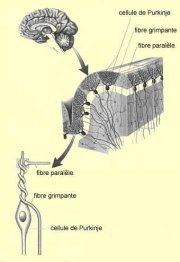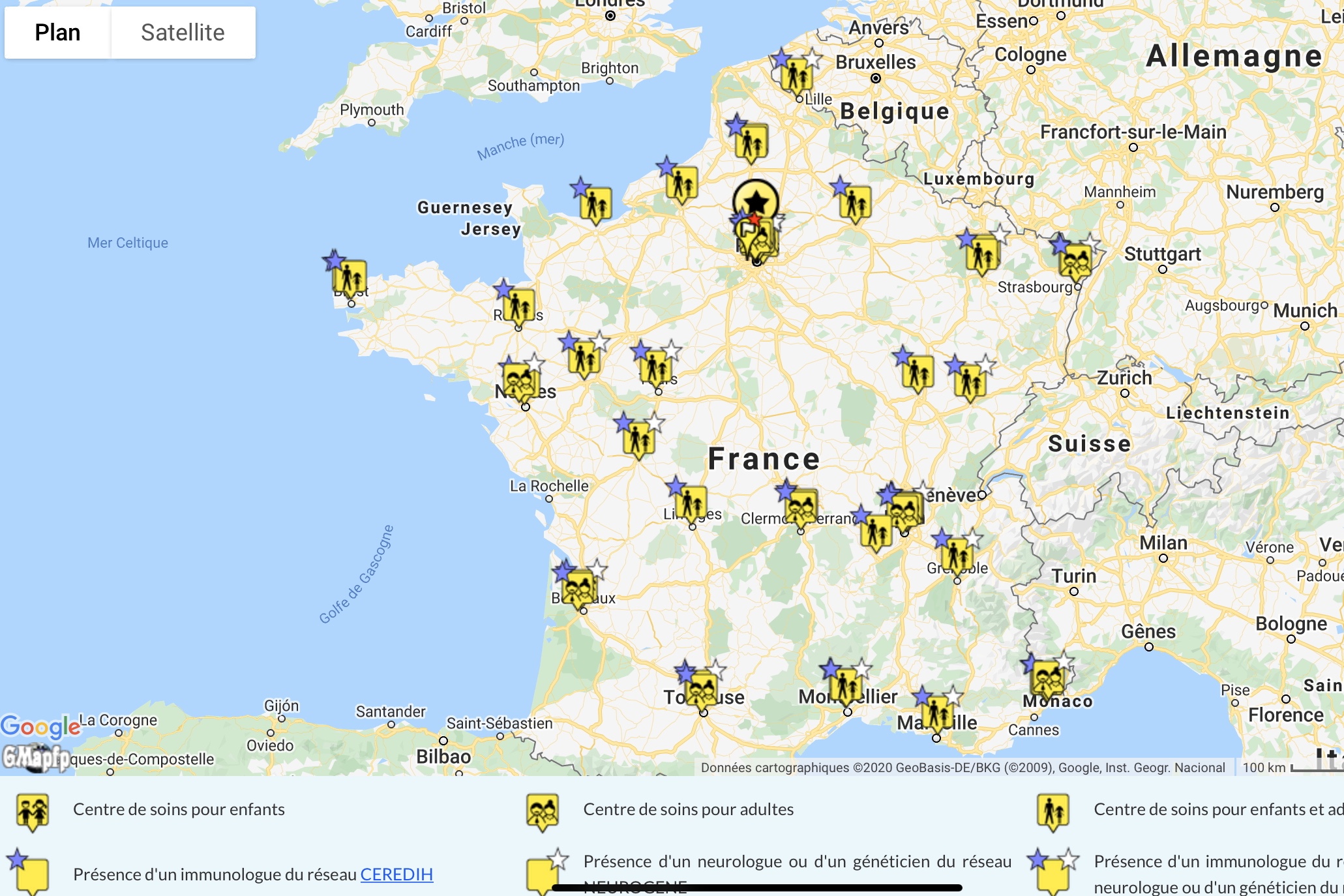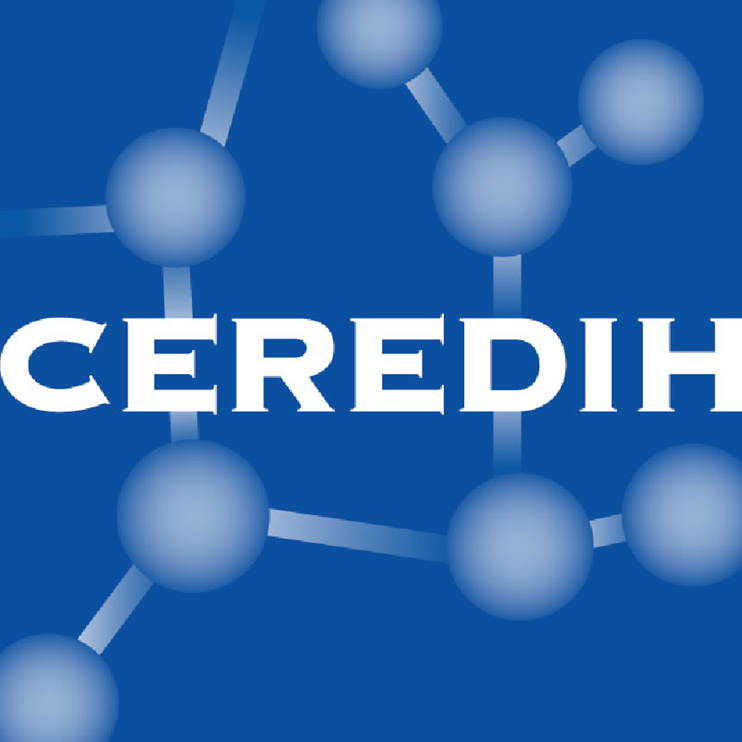The process of movements is a very complex phenomenon that involves many parts of the nervous system.
In Ataxia telangiectasia, the cerebellum is mainly affected, but not only.
Ataxia
In "Ataxia Telangiectasia," there is "Ataxia".
Ataxia is a balance disorder that is linked to a lack of coordination of orders coming from the cerebellum. There is a lack of fine coordination of voluntary movements.
Disorders
During voluntary movement, there is a usual balance between the agonist muscles (active) and antagonist (inhibitory).
In AT, there is a rebound effect: there is no brake in the movement, the subject is over the target due to a late braking action of antagonistic muscles. Ataxia is manifested primarily by troubles in gait, balance and standing, accuracy and movement guidance by sight.
These neurological disorders are exacerbated by fatigue, stress, infections and in maintaining unbalancedposture . Conversely, a appropriate sitting position allows to limit the magnitude of abnormal movements.
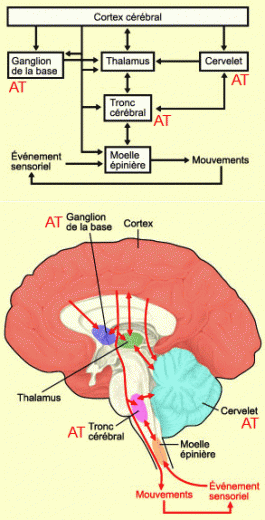 Command centers
Command centers
Ataxia in the OT is not related to muscle weakness or peripheral neuropathy (nerve damage).
Ataxia is also different from balance disorders and dizziness due to damage in vestibular centers (systems located in the inner ear, which measure the posture of a person in space).
Control and transmitting movements centers potentially affected in ataxia telangiectasia are:
- The basal ganglia
- The cerebellum
- The brainstem
The basal ganglia
 Depending on the country, they include the thalamus or not. (see diagram cons
Depending on the country, they include the thalamus or not. (see diagram cons
All their functions are not yet known, but their role in motility is demonstrated, both for involuntary movements such as the unconscious maintenance of a posture, or for voluntary movements such as walking or talking.
The basal ganglia communicate with each other through chemicals, neurotransmitters. The harmony of the movement is the result of fine tuning between activating and inhibitory neurotransmitters.
They are also affected in other diseases such as Parkinson's, where, as in AT, there are problems of tone (rigidity) and unwanted movements.
The cerebellum
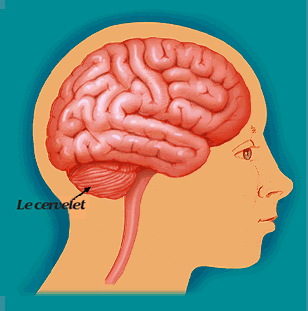 The cerebellum is the center of the fine coordination of muscle movements and balance control: it controls the fine dosing to apply to the muscles for a given action.
The cerebellum is the center of the fine coordination of muscle movements and balance control: it controls the fine dosing to apply to the muscles for a given action.
When injured as in AT, in addition to impaired balance and rebound phenomenon described above, speech may also be affected.
For patients with AT, it is particularly Purkinje cells (see below) that are affected.
The information that emerges from the cerebellum is conveyed to the muscles through the spinal cord and peripheral nerves.
The Purkinje cell is a specific type of neuron in the cerebellum. It is a "communication" cell.
Neurons communicate with each other through synapses to form a network. The Purkinje cell is the central element of synaptic network of the cerebellum, that is to say the majority of neurons that make up the cerebellum is connected to the Purkinje cells.
To take one example, the Purkinje cell is a bit like an old phone system operator who was connected with all the lines of the network, receiving all communications and distributing them in the right place. In the modern era, it would be a switch in a computer network.
It is known that these cells are progressively damaged in ataxia telangiectasia, bringing with them a dysfunction of the cerebellum.
The brainstem
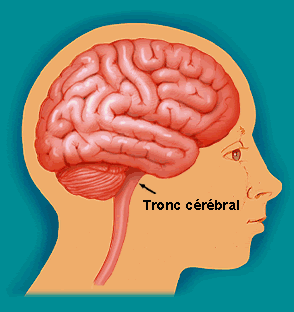 The brain stem connects the base of the brain to the spinal cord. It controls among others basic involuntary functions of life such as breathing. It also develops reflexes orders of maintaining balance.
The brain stem connects the base of the brain to the spinal cord. It controls among others basic involuntary functions of life such as breathing. It also develops reflexes orders of maintaining balance.
When injured, dysarthria can also appear (difficulty with speech, cf Speech) and / or dysphagia (difficulty in swallowing - see Swallowing)
Peripheral nerves
They transmit motor or sensory information from the spinal cord to muscles (motor) or to the sensitive sensors (hot, cold, pressure, position in space).
In AT, it seems that dysfunctions of peripheral nerves are revealed with age, which may result in some muscle weakness and sensory loss. But generally, central nervous system disorder masks this phenomenon.
Process in AT
In the central nervous system where neurons do not multiply, the absence of ATM protein might disrupt homeostasis, that is to say, nutritional support and environment of nerve cells. This is known as degeneration of nerves and nerve cells.
 Nevertheless, therapeutic approaches are followed. Among them, the role of growth factors. Following recent discoveries, they seem to impact the rate of degradation. Thus, the growth hormone GH and its mediator IGF-1 (cf Growth et Diabetes) appear to affect the production of myelin, the insulation of neurons playing the same role as an electrical wire insulation. And it has been shown that the absence of ATM protein disrupts the production and regulation of these molecules for growth.
Nevertheless, therapeutic approaches are followed. Among them, the role of growth factors. Following recent discoveries, they seem to impact the rate of degradation. Thus, the growth hormone GH and its mediator IGF-1 (cf Growth et Diabetes) appear to affect the production of myelin, the insulation of neurons playing the same role as an electrical wire insulation. And it has been shown that the absence of ATM protein disrupts the production and regulation of these molecules for growth.A team of German researchers have noted a lengthening of life span and neurological and immunological improvement on laboratory AT mice who received growth hormone. Far from declaring victory, this discovery gives hope to delay the effects of the degeneration in AT, thus saving time.
In line with this idea, another German program has just begun on children with ataxia telangiectasia.

